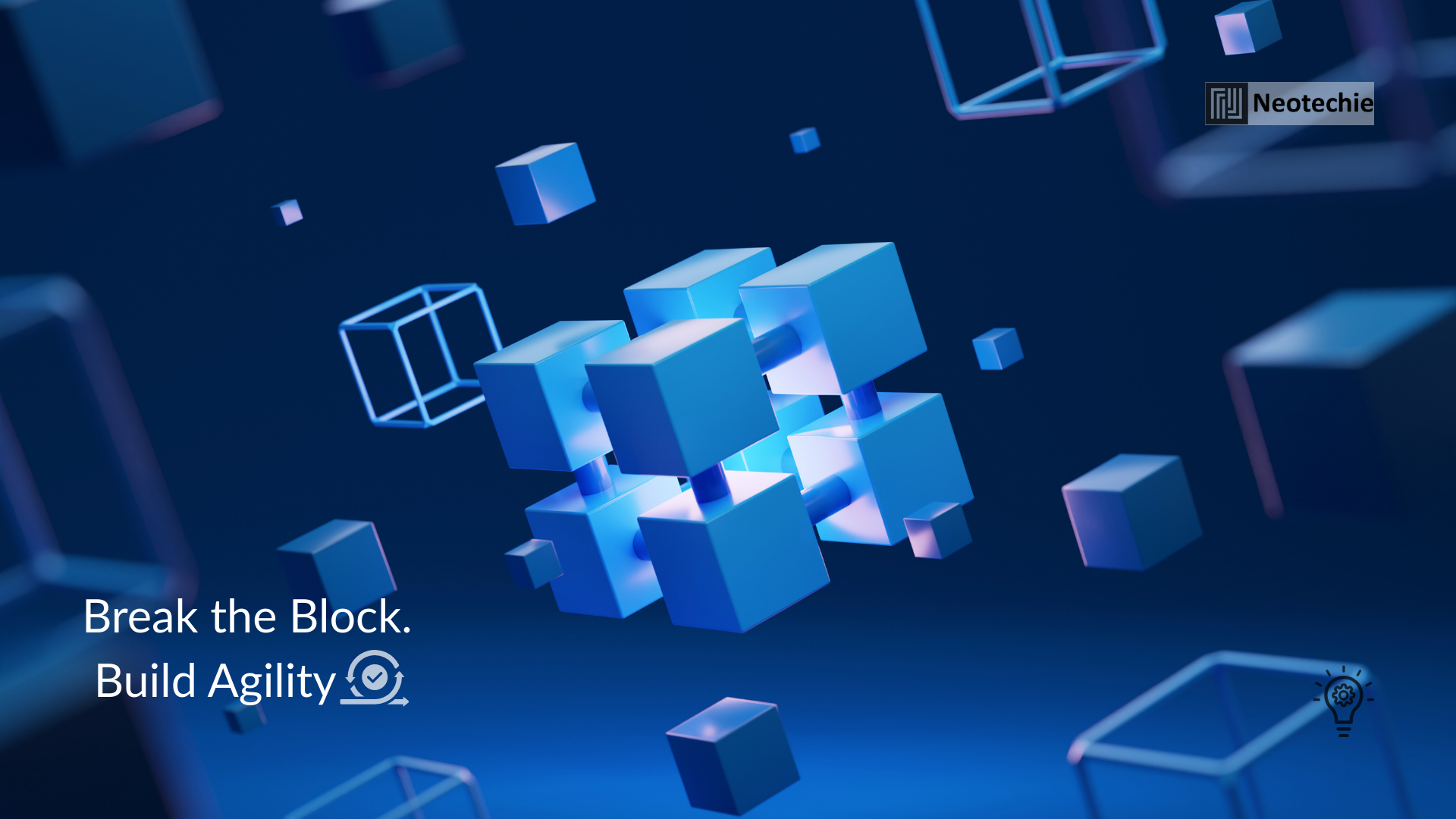From Monoliths to Microservices: Unlocking Agile Innovation in Enterprises
Many enterprises still operate on monolithic software architectures—large, tightly coupled systems where all components are interdependent. While monoliths were effective in the early days of software development, they increasingly create bottlenecks for modern businesses striving for agility, scalability, and continuous innovation.
Transitioning from a monolithic structure to a microservices architecture is more than a technical exercise—it is a strategic business move. Microservices break applications into independent, modular components that can be developed, deployed, and scaled individually. This shift is critical for enterprises seeking faster feature delivery, better system resilience, and the ability to adapt quickly to changing market demands.
What Monoliths and Microservices Are
Monolithic Architecture:
- A single, unified codebase handling multiple functions.
- Tight coupling between components, making changes or updates difficult.
- Scaling often requires duplicating the entire application rather than just the needed part.
Microservices Architecture:
- An approach where the application is divided into independent services, each responsible for a specific function.
- Services communicate via APIs, allowing flexible deployment.
- Scaling can target only the services that need it, improving resource efficiency.
The contrast is clear: microservices provide modularity, flexibility, and scalability that monoliths struggle to offer.
Why Enterprises Need to Move Beyond Monoliths
1. Accelerated Feature Delivery
Microservices allow development teams to work on separate components simultaneously. Teams can release updates faster, reducing time-to-market and allowing businesses to respond to customer needs swiftly.
2. Improved System Resilience
In a monolithic system, a single failure can bring down the entire application. Microservices isolate failures to individual services, minimizing disruptions and improving system reliability.
3. Enhanced Scalability
Instead of scaling the entire application, enterprises can scale only the high-demand services. This targeted scalability reduces infrastructure costs while supporting business growth.
4. Better Technology Adoption
Microservices allow organizations to use the best-fit technologies for each service without being tied to the constraints of a monolithic stack. Teams can adopt modern frameworks and tools progressively.
5. Simplified Maintenance and Upgrades
Smaller, decoupled services are easier to maintain, debug, and upgrade. This reduces technical debt and ensures long-term software sustainability.
Challenges of Migrating to Microservices
While the benefits are clear, migration is not without challenges:
- Complexity Management: Breaking down a monolith requires careful design to avoid creating fragmented, hard-to-manage services.
- Data Consistency: Managing data across distributed services demands robust strategies to maintain consistency and integrity.
- Operational Overhead: Monitoring, logging, and managing multiple services can increase operational complexity.
- Skill Requirements: Development teams must understand service-oriented design, API management, and DevOps practices to succeed.
Addressing these challenges requires strategic planning, the right tools, and experienced partners.
How to Successfully Transition to Microservices
1. Assess and Prioritize Components
Identify which parts of the monolithic application would benefit most from independent deployment and scaling. Start with high-impact modules to maximize ROI.
2. Adopt API-First Design
Ensure that services communicate through well-defined APIs. This approach enhances interoperability and simplifies future expansions.
3. Implement DevOps Practices
Automation in deployment, testing, and monitoring is critical. Continuous Integration and Continuous Deployment (CI/CD) pipelines support rapid, reliable releases.
4. Focus on Data Management
Implement strategies for distributed data management, such as event sourcing, CQRS (Command Query Responsibility Segregation), and database-per-service approaches.
5. Monitor and Optimize
Use monitoring tools to track service performance, detect bottlenecks, and optimize resource usage. Continuous improvement ensures long-term success.
6. Ensure Governance and Compliance
Establish rules for service design, security, and data privacy to maintain compliance and operational integrity.
Business Benefits of Microservices
- Faster Innovation: Agile, modular architecture accelerates new feature deployment.
- Operational Efficiency: Only necessary services are scaled, optimizing resources and reducing costs.
- Resilient Systems: Failures are isolated, ensuring uptime and reliability.
- Flexibility in Technology: Teams can adopt modern frameworks and tools for each service independently.
- Sustainable Software: Easier maintenance, debugging, and upgrades reduce long-term technical debt.
How Neotechie Helps Enterprises Migrate to Microservices
Neotechie supports businesses through every stage of the microservices journey:
- Assessment & Strategy Development
We analyze your existing monolithic systems and develop a roadmap for gradual, high-impact migration. - Service Design & Implementation
Neotechie architects modular, scalable services with robust API frameworks and modern technology stacks. - Integration & DevOps Enablement
We implement CI/CD pipelines, automated testing, and monitoring tools to ensure smooth, reliable service deployment. - Data Management & Governance
We design distributed data strategies and establish governance policies to maintain integrity, compliance, and security. - Continuous Optimization & Support
Post-migration, Neotechie provides monitoring, optimization, and lifecycle management to ensure sustainable success.
Final Thoughts
The move from monoliths to microservices is not just a technical upgrade—it is a strategic lever for business agility, innovation, and growth. Enterprises that embrace modular, scalable architectures can respond faster to market demands, reduce operational risks, and foster continuous improvement.
Transitioning to microservices transforms software from a static asset into a dynamic driver of business transformation.
With Neotechie’s expertise, businesses can navigate this migration confidently, ensuring scalable, resilient, and efficient systems that support long-term innovation.

